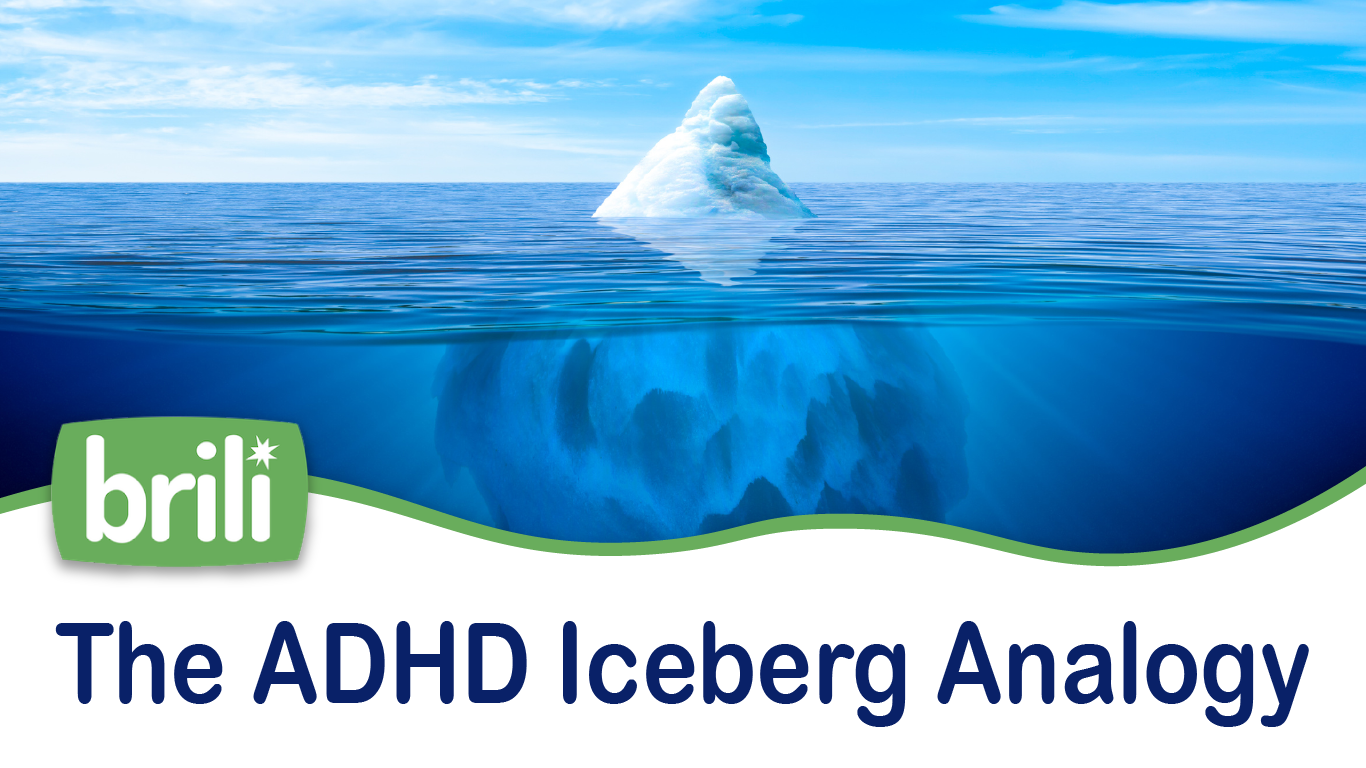If you’ve ever tried to explain what it is like to live with ADHD, you know that it can be difficult to convey the true extent of the condition to people who don’t experience it. That’s why the ADHD Iceberg concept is a useful tool for explaining the condition to friends and loved ones in an empathetic way.
The ADHD Iceberg concept is a visual representation of the condition, which illustrates how the visible “tip of the iceberg” of ADHD — the hyperactivity, distractibility, and impulsivity — is just the outward manifestation of a much greater, invisible set of challenges.
Beneath the surface, there are many underlying components to ADHD, such as mood swings and anxiety, sleeping problems, low self-esteem, difficulty with relationships, shame and frustration, and of course difficulty with executive functioning, that are not always visible.


The main benefit of the ADHD Iceberg concept is to shift the focus from the few visible symptoms to the many other affected areas of life – because there is so much more to ADHD than meets the eye. It puts into visual terms what can often seem like an abstract condition, helping to bridge the gap between understanding an individual’s experience of ADHD and the general public’s perception of it.
By illustrating that ADHD is more than just an outward behavior, colleagues, friends and family members can better appreciate how an individual is affected, enabling them to be more empathetic and understanding. It can also help to normalize ADHD, as it shows that it is a real and very complex condition and not an excuse for "bad" behavior.
Using the ADHD Iceberg concept can be a powerful way to explain ADHD to friends, loved ones, and co-workers in a straight forward way. If you’re looking for a way to have meaningful conversations about ADHD that is easy to understand and relatable, this metaphor is a great place to start.
